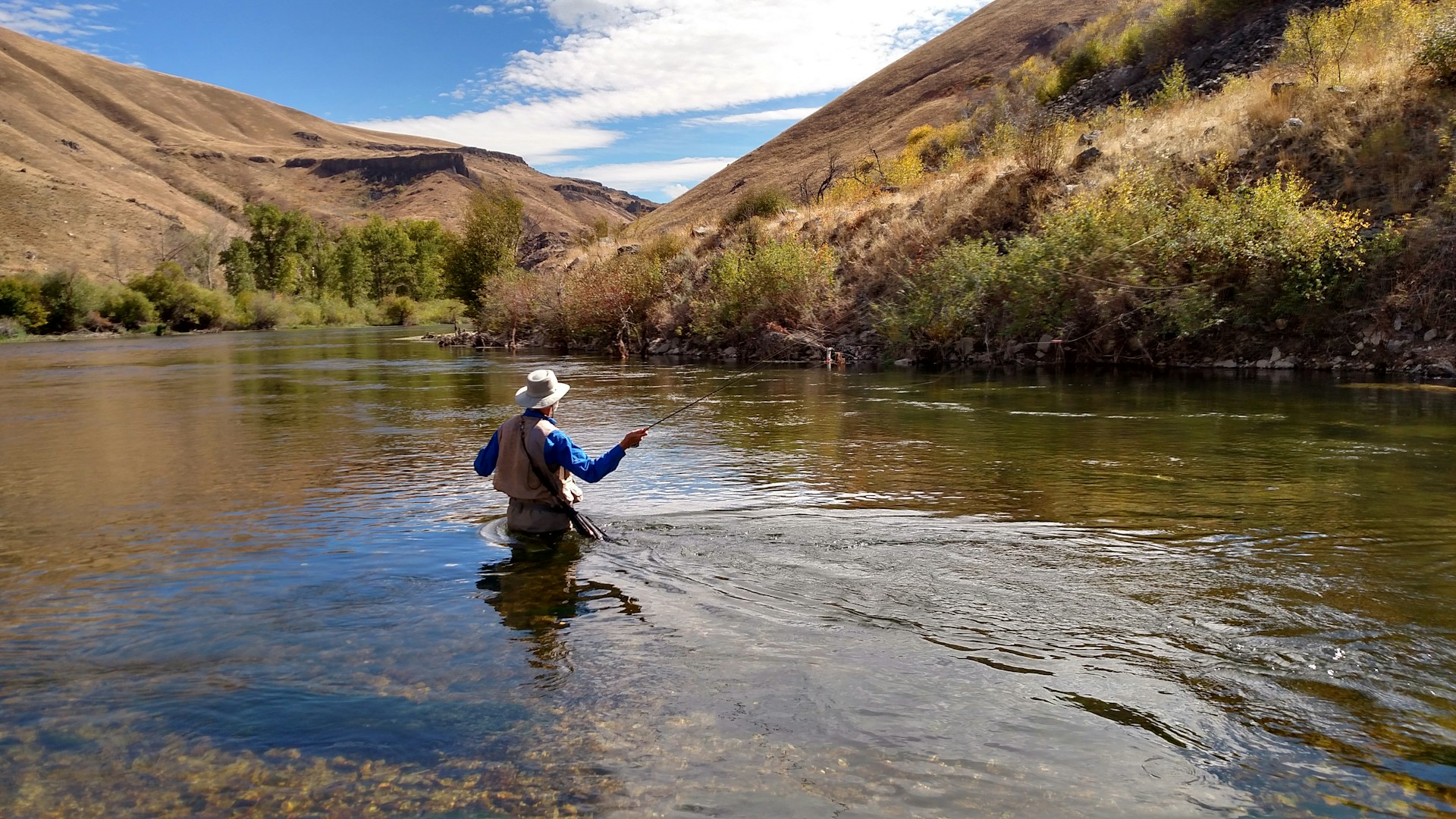
Hey there, fellow outdoor enthusiasts! It’s Trevor Riggs from Explore Montana Outdoors back with another informative piece for you. If you’re an adrenaline junkie who’s passionate about biking and camping, it’s crucial to be prepared with the right gear. Ensuring a smooth and safe journey requires careful planning, and having a checklist for your bike items is part of that. This article is all about essential camping gear for biking trips; let’s help you pack wisely and guarantee a fantastic time in Mother Nature’s backyard.
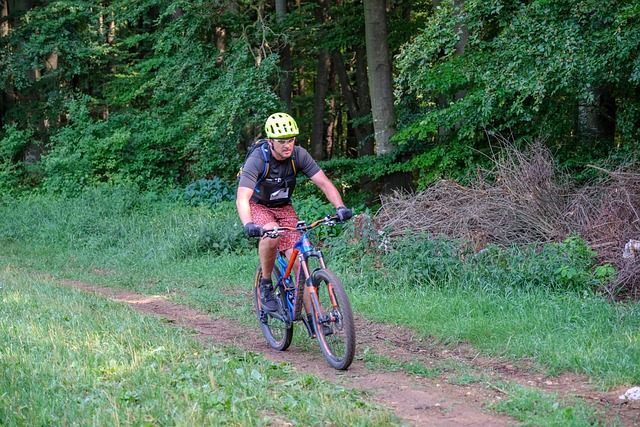
If you’re a fan of biking and camping, then bicycle touring is the game for you. But for that, you need to get some essential camping gear. This cycle touring gear guide is going to help with just that! Here, at Explore Montana Outdoors, we’ve got a ready-made checklist for your bikepacking adventure, complete with all the things you need.
First on the list is a bike. Too basic, right? But it’s crucial. Then a lightweight bag to keep all your gear. Bikepacking isn’t worth the fun if you’re lugging around a heavy bag, so make sure you opt for something lightweight. A saddle bag, handlebar bag, and frame bag should cover all your storage needs.
When it comes to camping equipment for your bike trip, it gets a bit more intensive. To brave the outdoor elements, you need the right gear. Your gear guides should feature items like a sleeping bag, tent, cookware, a first-aid kit, and more. Bikepacking essentials also include items like lights, GPS, a good-quality helmet, and puncture repair tools. Without these essentials, the trip could quickly turn into a hassle.
And yes, we know that gear, gear, and more gear makes the checklist look daunting. But we promise you – once you have all of this sorted, your bike trip is going to be a breeze. Remember, being properly equipped is not just about comfort, but safety as well. So, do take special care to gather all your bikepacking gear before you head off on your adventure.

“Bikepacking in its purest form explores off-pavement roads and trails, which makes a mountain bike an ideal choice for many riders. But really, there’s no one bike right for bikepacking; bikepackers use everything from touring bikes to full-suspension rigs on their explorations. Finding the best bike for you often requires balancing your priorities and accepting certain tradeoffs.”
Rei Expert Advice
There you have it – your essential cycling gear checklist for bike camping adventures. Now, get packing!
Essential Bike Gear for Multi-Day Cycling Adventures:
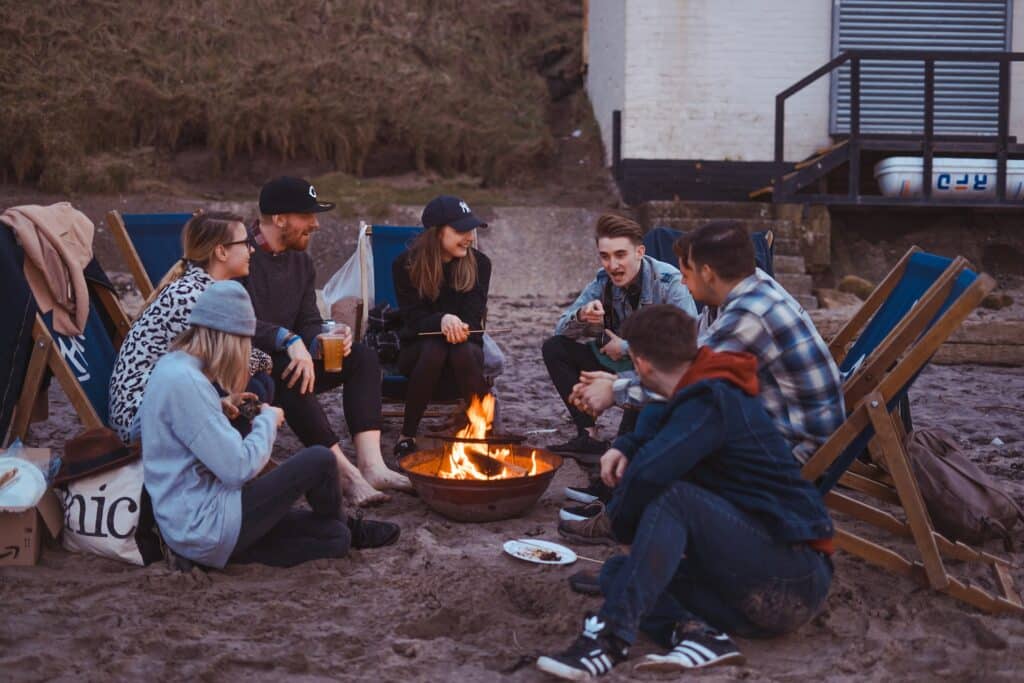
Download a compressive check list from REI here
Are you gearing up for a bikepacking trip? Well, let’s start with the essentials on your checklist. For any kind of biking and touring expedition, bike bags form an integral part of your gear. From storing your food and water supply to stashing key items like your sleeping bag, a sturdy and spacious bike bag is indeed a lifesaver. Not to forget, for comfortably spending nights, a tent that easily folds into your bike bag is also a significant part of the gear.
Trudging on rough terrains and racing through the trails can be taxing. But guess what can be a game-changer? An assortment of well-packed bike bags. They can easily distribute the weight evenly across your bike, helping you travel with ease. Now, that’s what we at Explore Montana Outdoors call ‘touring smart’!
While buying bike bags might seem quite straightforward, it’s not just about picking any random bag. Oh no, buddy! This is where articles buying guides step in, providing valuable insights and information. Look for bags with multiple compartments that can Separate your sleeping bag from other gear and food items. Weatherproof material is a bonus! Trust us; you wouldn’t want your sleeping bag getting wet or your food going bad!
Utilize the most of your bike bags by storing all the essential gear, checklist handy for reviewing. Remember, the goal isn’t to stuff your bag to the brim but to pack strategically. Your gear should be accessible yet secure. So folks, as you prepare for your next thrilling touring expedition, make sure your bike is geared up with the right bags. Happy exploring!
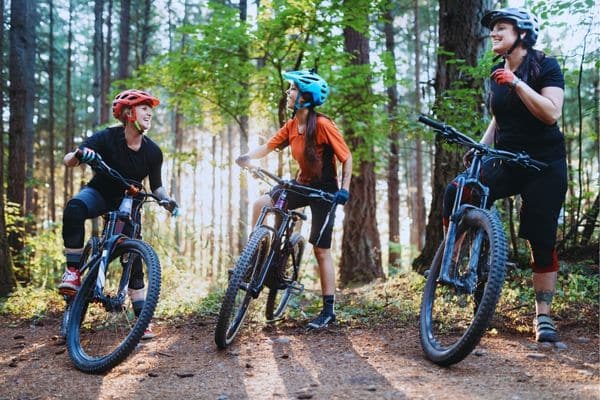
When it comes to the exciting world of biking adventures under the big sky, there are two primary ways thrill-seekers like those of us at Explore Montana Outdoors like to hit the trails: bikepacking and cycle touring.
Now, you might be wondering, what’s the big difference, right? Well, let me enlighten you. Bikepacking is a way to truly embrace the spirit of adventure. It’s about packing light and strapping a minimal gear list to your bike, which typically involves a few specialist bags.
This lightweight setup allows you the freedom to go off-road and immerse yourself in the wilderness. To do it right, though, having a handy list of skills checklists is a must. They’ll equip you with what you need to tackle any hiccups on the way.
On the other hand, cycle touring is another way to explore the great outdoors. However, it usually involves packing a bit more gear and utilising pannier bags attached to the front or rear rack of your bicycle. Cycle touring is often geared more towards extended trips over flatter terrain or well-made paths.
It allows you to carry more supplies which means you can venture out for longer tours, but you might be somewhat limited in the terrain you can cover. Don’t get me wrong, both bikepacking and cycle touring have their own charm, and your choice between the two will largely depend on the type of adventure you’re after.
If you’re keen to keep the load light, explore more rugged, unpaved paths and single-track trails, bikepacking should be right up your alley. But if you’re in for longer trips and want to have plenty of gear with you while staying on more predictable paths, then cycle touring will be your style.
Either way, you’re in for a ride of a lifetime with the right gear to aid your biking adventure.
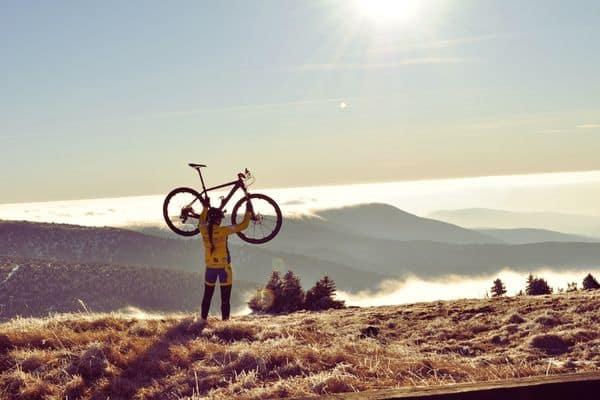
It’s time to get serious about bikepacking. We’ve already joined the ranks of those taking on the backcountry on two wheels, now let’s get our gear, gear, and more gear in check. The essential bikepacking kit is more than just your bike and your camping gear. Believe it or not, it’s an art and science to figure out the right gear and clothes for bikepacking trips.
Your sleeping kit is a non-negotiable when you’re bikepacking. It needs to be lightweight, small, and still offer comfort and insulation. Don’t skimp on a good sleeping bag and mat – you’ll thank me when you’re fast asleep in the backcountry after a long day of riding. Planning on shopping for gear soon? Here’s a pro tip – prioritize quality over everything else. This way, you’re making a long-term investment and not just buying gear for a one-off trip.
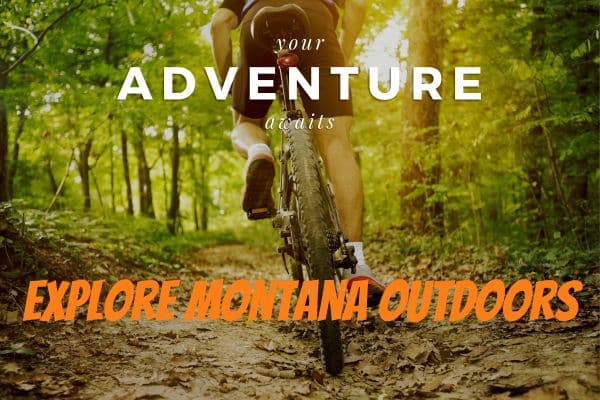
Next on the list, let’s talk repair. A bikepacking repair kit is not just about fixing punctures – bikepacking requires a rugged, multifunctional kit. Whether you’re facing gear issues or need to tweak something on your bicycle, the right repair kit will keep you rolling.
When it comes to clothes, layering is your best friend. Pack clothes that are moisture-wicking, quick-drying, and multifunctional. Merino wool is a bikepacker’s favorite for its ability to regulate body temperature, dry quickly, and resist odors. And of course, don’t overlook your helmet and gloves.
Whether you’re prepping for an epic cross-country journey or just weekend training rides, having the right gear will make your bikepacking experience much better. Remember, bikepacking is about the journey, not just the destination. Happy trails and enjoy exploring the Montanan outdoors!
A lightweight, freestanding 2-person backpacking tent that is the perfect balance of weight, comfort and livability for three-season adventures; minimum weight is 2 lbs. 14 oz (1.30 kg)
Maximum space with a true rectangular floorplan and exceptional head room (40 in/1.01 m) with two large side-entry vestibules to store gear
Waterproof DuraShield fabric coating and taped seams keep the elements outside where they belong
According to a review by Outdoor Gear Lab, the HUBBA HUBBA 2-PERSON BACKPACKING TENT tent is highly recommended for its lightweight and durability.
When you’re headed out into the backcountry on a bikepacking adventure, ensuring you get the right sleep is just as important as having the right gear. A key player? Your sleeping bag.
There are various sleeping bags to choose from. But what qualities should you be eyeing? A bag that packs well (we love compression sacks for this), one that can handle moisture (opt for waterproof bags just in case), and one that provides enough warmth for the temperatures you’ll be battling.
But it’s not just about sleeping bags, no matter how vital they are for restful nights in the backcountry. The tent is another significant sleep-related thing to consider!
Tents are one of the heavier things you’ll pack, but also one of the most essential.
Tent choice will highly depend on your personal preference, the number of people in your party, and whether you’re looking for something lightweight or willing to haul a larger, more spacious tent.
Now, let’s talk about waterproof features again. In case you haven’t noticed, we’re big fans, even when it comes to tents.
A tent that keeps you and your gear dry during sudden downpours is a no-brainer. So, let’s sum it up: for the perfect sleep, choose a sleeping bag that’s right for your needs, pick a tent worthy enough to be your home for a few nights, and ensure that both are waterproof. Sounds easy, right?
Well, it can take a bit of time and some serious gear shopping, but we promise it’s all worth it in the end for a successful bikepacking trip. Explore Montana Outdoors is here to help every step of the way.
| Sleeping Bag | Insulation Type | Weight | Temperature Rating | Special Features | Pros | Cons |
|---|---|---|---|---|---|---|
| Nemo Tango Solo Down Comforter | Down | 1lb 13oz | 30F/-1C | Integrates with sleeping pad, 700 Fill DownTek | Very light, lots of room, innovative design | Requires a separate sleeping pad, longer drying time |
| Outdoor Vitals Summit Down Bag | Down | 2lbs 7oz | 20F/-6C | 800 Fill Down, Grid Baffle Design | Cheaper, large zippers, cold-resistant | Heavier, longer drying time |
| Therm-A-Rest Regulus 40 Blanket | Down | 2lb 2oz | 40F/4C | 750 high filled down, Loop Kit | Lightweight, packable, DWR coated | Limited to 40F, heavier |
| Mountain Hardwear HyperLamina Spark 35 | Synthetic | 1lb 10oz | 32F/0C | Lamina construction, Thermal.Q insulation | Lightest, compact, quick drying | Tight fit, less cold-resistant |
When I first tried bikepacking in Montana’s backcountry, I packed way too much. It’s like backpacking, but on your bike, and the key is to go light. Just take the basics: a small tent, a cozy sleeping bag, a little cookstove, some food, water, and a bike repair kit. Strap it all down tight, and you’re good to go. It’s all about the freedom of the trail with your bike, and trust me, a lighter pack makes it way more fun! Happy trails! ?♂️??
When it comes to bikepacking, traveling light is the name of the game. You want to explore those beautiful trails, maybe even in Montana, without lugging around everything but the kitchen sink. This is about being in the great outdoors, being part of nature, embracing the essence of biking travel. You should be focused on the journey, not burdened by a heap of unnecessary gear.
The key is to bring only what you need, nothing more. Think lightweight. Everything from your clothes to your gear should weigh as little as possible. Every item in your rucksack needs to serve a function. If it doesn’t, leave it behind.
Bikepacking is different from cycle touring, so forget what you know about that. This is a whole different kettle of fish. We’re talking lightweight camping gear for biking trips. Compact and easy to carry is what we’re going for here.
Essentially, you’re going to be folding your entire life into a few bike bags. Sounds tough? Well, it’s just part of the adventure. And it doesn’t have to be as daunting as it sounds. With a bit of planning, bikepacking can be an incredibly freeing way to travel.
Don’t fret too much over your bikepacking kit. It doesn’t need to be complex. Keep it simple. A comfy sleeping bag and lightweight tent for when you’re settling down for the night, adaptable bikepacking clothing for whatever the weather, and a solid water carrier for those thirsty moments on the trail.
So remember, you don’t need to bring everything. You just need to bring the right things. With a well-planned set of gear and a lightweight mindset, you’re set for your bikepacking adventure. Now, get out there and enjoy the ride!
Exploring the top bikepacking routes is a sure way to experience biking nirvana. True biking enthusiasts know, the real thrill in bikepacking isn’t just about being on your bike, riding the wind along the path less travelled. It’s about the whole adventure – from sorting through your gear, selecting the right bike, planning the route, right up to reaching your camping nirvana.
The preparation phase in bikepacking is just as important as the actual bike ride. You need to make sure your gear is top-notch, and when I say gear, I mean everything – your bike, your sleeping bag, your riding clothes, and yes, even your camping supplies.
It’s not just about ensuring your bike is trail-ready, but to also exactly know what to pack for bikepacking. Your gear checklist should be comprehensive enough to sustain you in the great outdoors.
Survival in an off-grid adventure depends on the gear you bring, and here at Explore Montana Outdoors, we highly vouch for quality over quantity.
Your checklist in your bike bags storage should reflect the same. While packing light is efficient, it shouldn’t compromise the quality of your bike camping adventure.
Riding your bike is only half the fun, choosing the right camping spot and setting up your tent for bikepacking is another.
Recognizing the top bikepacking routes is an essential factor in the bikepacking vs cycle touring debate. It’s about riding through awe-inspiring landscapes, secluded wilderness, and raw, untamed territories. It is about finding the right way to your biking nirvana.
Enjoy the freedom of the open road as you embark on your bikepacking adventure. Take just the essential camping gear, make every pedal stroke count, and find the perfect way to your biking nirvana. Happy bikepacking!
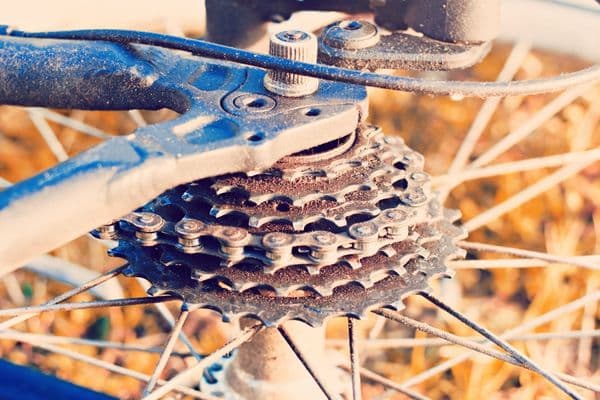
As adventurous people, we truly understand that bikepacking isn’t just about pedaling away excitedly on your bike; it’s also about making sure you’ve got your essentials sorted. It’s a thrilling dance between the comfort of life and the wilderness’s unpredictable demands.
One of the most pivotal essentials in bikepacking is keeping on top of food and nutrition. Now, all of us foodies out there might be excited about a campfire feast, but remember, the goal is to travel light and eat right. Pack according to your REI checklist, ensuring you have the right balance to keep your energy levels up and powering through your adventure.
Why is food so important while bikepacking? Well, think of it this way: food supplies you with the necessary energy to keep moving, plus it gives you a much-deserved reward to look forward to at the end of your biking day. A blend of good nutrition and comfort food can do wonders for your morale.
What’s more, it’s essential to know the right foods that offer long-lasting and slow-releasing energy; these are your good buddies on the trail.
Additionally, don’t forget hygiene; it’s just as important as food. Cleanliness and sanitation in bikepacking can often show how good of an off-grid explorer you indeed are.
Keep a travel-sized hygiene kit with you; it might not be top of the show, but it will undoubtedly keep you healthy and free of germs throughout your journey. After all, bikepacking is all about respecting and maintaining the natural balance; let’s extend that courtesy to our personal habits as well. So, pile up those essentials, people! Let’s take bikepacking to a whole new level of satisfaction!
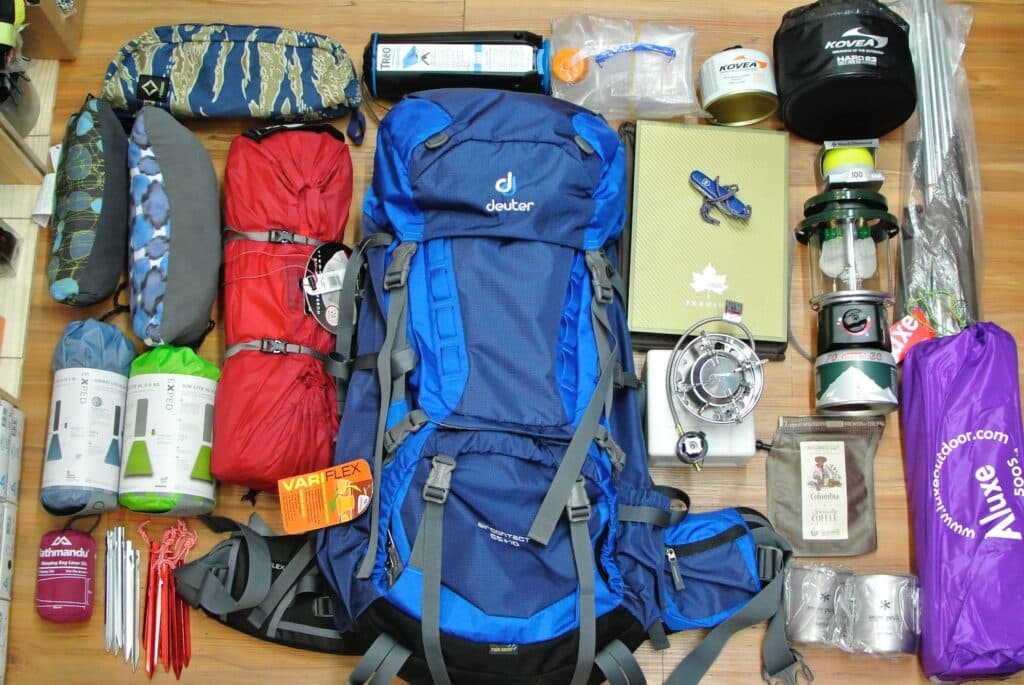
Nothing fuels the spirit of adventure like a bikepacking trip out in the wonders of Montana’s great outdoors. When it comes to preparing for the journey, it’s crucial to pack the essential camping gear for safety and to keep up with the unexpected turnover of events. But many people get lost in a sea of countless articles buying unnecessary items, instead of focusing on indispensable items like a reliable camping tent, a robust gear bag, and essential first aid supplies for safety during the bike tour.
While experiencing the joys of biking and camping during your camp escapades, always keep in mind that safety comes first. Your gear bag should be fully stocked with essentials like a handy knife for small tasks and emergencies alike. Remember, a well-prepared camper is a happy camper.
Bringing along a first aid kit will be one of the wisest decisions made on this adventure. In case of minor injuries, cuts, or scratches, your first aid box is your immediate savior. First aid items include antiseptics, band-aids, sterile gauze, tweezers, and over-the-counter painkillers.
Packing wisely for bikepacking trips could mean the difference between a comfortable adventure and an ordeal. It’s all about balance – packing enough to ensure comfort and safety, but not overpacking to the point of creating unnecessary burden. Though the list can be extensive, don’t include items that aren’t needed. Save that space for what truly comes in handy.
A successful bikepacking adventure is the result of meticulous planning and the right gear. Whether you’re a seasoned bikepacking user or a first-timer, these camping essentials are indispensable for your biking adventures. Stay prepared, stay safe, and most importantly, have fun on your unforgettable journey with Explore Montana Outdoors.

So you’ve got everything checked off from the essential cycling gear checklist for your bike camping adventures, and you’re pretty sure the gear in your bike bags is everything you’d need for your biking travels. But are you absolutely certain? Amidst all the thrill and preparations of bikepacking, one aspect that often gets overshadowed is electronics. Sure, going off-grid during your bikepacking tours feels great, but in today’s tech-driven age, it’s practically impossible, not to mention unwise, to go completely without tech. Just like every other bag in your gear, your electronics bag, too, should be a thoughtfully packed part of your bikepacking kit.
Heading on a biking journey into the backcountry and have your sights fixed on that perfect sleep under the sky? You’ve ticked off your sleeping bag and tent in your bikepacking essentials. But be sure you don’t step out without the right tech. Travel light, sure, but don’t forget to gear up with essential electronics to ensure a safe and successful cycle tour.
Why do you need tech in your bikepacking gear, you ask? From navigating routes to communicating emergencies, from keeping your equipment battery-charged to tracking your cycling, the right tech aids are must-haves for bikepacking. Your bag should also contain devices for monitoring weather and staying up-to-date while you travel through unknown terrains. For those who prefer solo bikepacking, it’s all the more important to carry essentials like GPS, communication devices, and emergency beacons.
So, for your next biking adventure, gear up with the right tech and make your bikepacking trip not only enjoyable but also worry-free!



| Multitool | Features (Functions) | Weight (grams) | Pros | Cons | Overall Summary |
|---|---|---|---|---|---|
| ToPeak Mini PT30 | 30 | 163 | Feature-packed, all-metal construction, neoprene carrying case, tubeless plug insertion tool. | Expensive, moderate weight | Best overall, offering 30 functions in a moderately sized package. Versatile and durable but pricier. |
| Pro Bike Tool 17 in 1 | 17 | 118 | Simple design, lightweight, sleek profile, ergonomic frame. | Short tool bits, mediocre leverage | Great value for its price. Lightweight and has all the essential functions for common mid-ride issues. |
| ToPeak Ninja 16+ | 16 | 93 | Super lightweight, small, reinforced polymer frame, feature-packed for its size. | Sub-par ergonomics | Best lightweight option, packing 16 relevant functions in a small frame. Ideal for a slim kit. |
Enjoying your outdoor biking trips with Explore Montana Outdoors involves having the right gear positioned and accessible. Whether you’re venturing into your usual weekend bike ride or embarking on a more extended bikepacking tour, your essential gear needs to be sorted. In this article, we’re zooming in on bike tools and spares – key items you shouldn’t leave behind.
Bikepacking is all about deep exploration and encountering the unexpected. But remember, you’re only as good as the gear you’re going with. From the necessary tyre repair gear to extra bike tubes, these necessities should be part of your bikepacking kit.
Always ensure you’ve got the right bike tools along for your ride. We’re talking Allen wrenches, tire levers, a mini pump, and a multitool with a chain breaker.
Having these at hand can make a difference between a smooth ride and a bike repair saga you want to skip. The right bike tool can be a lifesaver on your journeys, fixing nuts and bolts, adjusting your brakes, fitting spares, and more.
While spares can be seen as extra weight, they’re essentials worth carrying. Imagine getting a flat tyre in the middle of nowhere. A spare tyre or extra patch kit can get you back on track in no time.
Bikepacking truly challenges that saying “less is more”. But remember, simplicity in bikepacking is about achieving maximum enjoyment with minimal fuss.
So, create your own gear kit that speaks to your experience level and the kind of adventure you’re planning for. A well-prepared and organized bikepacking kit with bike tools and spares can be a game-changer leaving you to enjoy the essentials of your biking adventures.
So, don’t leave your essential gear behind. Store up, gear up, and set out to bikepack your next adventure with Explore Montana Outdoors.

Alright, you’ve got your essential biking and camping gear sorted out, but have you considered those non-essential items that could really enhance your bikepacking experience?
Yeah, I’m talking about the bells and whistles, the bikepacking luxuries that, while not required, can make your road trips all the more comfortable and, dare I say, fun.
It’s a given that your pedaling adventures require top-notch bikes and gears. However, once you’ve crossed off all the essentials from your bikepacking kit, there’s still a bit of shopping to do.
Let’s dive into the world of non-essential bikepacking items. This guide aims to provide a clear picture of those extras that, while not essential, can definitely improve your biking time.
From comfort-enhancing additions such as padded seat covers and tyre liners to gadgets like action cameras and solar USB chargers.
Sure, some might deem these items as purely luxurious, but hey – isn’t part of the joy of bikepacking indulging in a bit of comfort?
While these non-essentials may add a bit of weight to your bags, they can significantly boost your overall bikepacking experience. Keep in mind that biking can be strenuous, so having a few comfort items in your kit can be a real benefit.
Alright, I hope this guide has successfully stirred your interest towards enhancing your bikepacking experience.
Surely, adding a few of these biking luxuries to your gear won’t make your load too heavy. Remember, your bikepacking journey should be enjoyable, not just hard work! Every gear, every trip and every road is an opportunity to explore, so why not do it in style?
And as always, continue to explore the magnificence that Montana outdoors has to offer!
To learn more about Trevor Riggs, please visit our About page.
The Montana Style is a participant in the Amazon Services LLC Associates Program, an affiliate advertising program designed to provide a means for sites to earn advertising fees by advertising and linking to Amazon.com